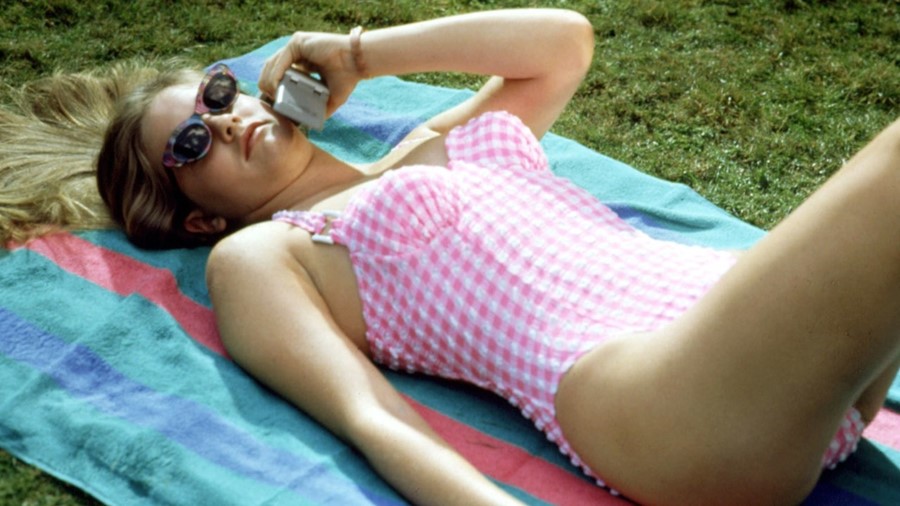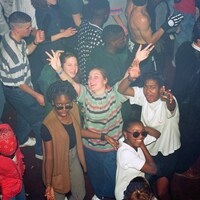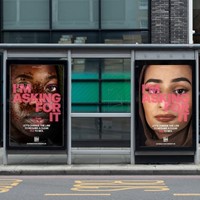While the 90s and 00s had an abundance of tween-focused pop culture, it seems to be slowly going extinct – so what does that mean for young women today?
Picture the scene: you unclick your Avril Lavigne CD from its jewel case, pop on some Lip Smackers (watermelon flavour, obviously), pull a fluffy pen from your Groovy Chick pencil case and flip open your copy of Mizz magazine. You browse some pics of buff lads before taking a personality quiz titled: ‘What’s your cringe rating?’
This might sound familiar to women in their mid-to-late twenties, but it would probably seem alien to most teens and pre-teens – which makes sense, because culture and technology are changing all the time. But if you look at the media landscape today, you could wonder whether things were actually more vibrant and abundant for tween and teen girls back in the 90s and 00s, whether that’s in film, fashion, music, TV, books, or even interior decor trends. What are the Tammy Girls, the Buffys, Jacqueline Wilsons, hair jewels, body glitter and inflatable chairs of the 2020s?
There are big markers to suggest that teen girlhood is in crisis at the moment. A report in the US recently found that 57 per cent of teen girls in 2021 reported feeling “persistently sad or hopeless” over the past year, up from 36 per cent in 2011. Many things could be contributing to this shift: pandemic isolation, sexual violence, anxiety around climate change and financial worries. Technology is shaping culture in a way that’s almost impossible to comprehend right now, with young adolescents plunged into adult circles on social media – and without enough representation in pop culture, especially in a world of Andrew Tate, could this be making them feel even more alone?
There have always been moral panics about music or film being too mature or harmful for the next generation, and nostalgia tends to coat everything in a ‘things were better in my day’ lens. But a tweet about how girls’ adolescence is changing recently had commenters nodding in agreement. “I’m fighting every day to keep my teen a teen,” one wrote. “Some things I’ve become relaxed on like getting her nails done – but even with that we’re arguing on length.” Another wrote: “I have 11-14-year-old nieces and they’re amazed when I tell them about the shows, stores, magazines and literally [the] whole world that [used to] cater to young girls.” Someone else added that if you ask a 13-year-old what she wants it’ll sound like a 21-35-year-old woman’s wishlist: “Lululemon, Telfar, Kylie/Fenty make-up”.
Pre-teen Olivia, 12, tells Dazed about the culture she’s into – her favourite shows at the moment are Vampire Diaries, Stranger Things and Friends. She likes Twilight and Marvel movies – but acknowledges there are not enough films for her age group. “I’d like to see more book recommendations for my age because I don’t really know what to read,” she says. She is also a big Olivia Rodrigo fan, which isn’t that surprising – artists like Rodrigo, Taylor Swift and Billie Eilish are, of course, huge among teen audiences, but you could just as easily find a 30-year-old singing along to good 4 u. Wholesome, Smash Hits-style bubblegum pop made specifically for teens and tweens seems to have largely faded away – Little Mix are on hiatus, and as the Guardian asked recently: where are all the good girl bands? R&B trio FLO are being tipped as the next big thing, but their sound and lyrics similarly appeal to a wide age range. The immense popularity of K-pop artists like BTS proves there’s still an appetite for all-singing, all-dancing boybands, so it’s baffling that Western pop hasn’t produced anything like One Direction, Blue or NSYNC in recent years.
‘The power of teens as a consumer group is disappearing. We’re seeing teen girls comparing themselves, their lives, their bodies, their experiences to people who are in different life stages and life phases compared to them’ – Janine Jellars
Those girl and boy groups were fundamental parts of much-loved teen magazines of decades past, complete with pull-out posters for bedroom walls. The collapse of print publishing saw titles like UK’s Mizz and Bliss and, worldwide, Elle Girl and CosmoGirl! fold. Sara Pollock, who runs the @90steenmagazinearchiveuk Instagram page, says teen mags could be a lifeline for girls: “in 1995, your average 14-year-old probably didn’t have a PC at home. Without a support system or trusted friends, [magazines] would have been an important source of guidance. I’d say that the problem pages and true life stories, at the time, were incredibly important.” These glossies often tackled periods, spots, crushes, insecurities and the angst of puberty in a way that, although widely mocked, allowed young girls to feel seen, and that their problems were valid. Tavi Gevinson’s colourful web zine Rookie Mag went against the grain of this by making teen life feel aspirational rather than awkward, becoming a hallowed place for the teenage girl before shutting down in 2018.
“We’ve witnessed a steady erasure of media spaces specifically catering for teen girls,” says Janine Jellars, who worked as editor-in-chief of the South African syndication of seventeen between 2010 and 2014. “They’re on the same social media apps as the rest of us and are facing the same pressures that adults face there, with much less guidance, or experience with which to manage those spaces.” She outlines the economic reasons for this: “Let’s not be naive about the fact that teen-focused media was a capitalist project to sell everything from clothes, to make-up to entertainment directly to the consumer. As there are fewer ring-fenced spaces dedicated to them and their needs, the power of teens as a consumer group is disappearing. We’re seeing teen girls comparing themselves, their lives, their bodies, their experiences to people who are in different life stages and life phases compared to them.” This, she says, can “definitely damage their self-esteem”.
Real, accurate portrayal in TV and film seems to be lacking, too. Many popular “teen dramas” seem to be produced for the older end of the adolescent spectrum. Euphoria’s gritty depictions of drugs, violence and sex (episode two featured a grand total of 30 penises) make it largely unsuitable for an early teen audience. The Skins-like Tell Me Everything from ITV is another show aimed at teens, but also focuses on drink, drugs and sex experimentation. Neither of these shows, along with other edgy teen dramas like Sex Education, seem representative of the younger teen experience. Comparatively, shows like 2013’s My Mad Fat Diary seemed much more honest about body types, many of today’s spotlight slim, glamorous and conventionally attractive actors.
“Young people are woefully underrepresented in the media and when they are represented, it is often through a lens created by adults,” says Jellars. “So you have hypersexualised, over-glamorised representations of this ‘teen world’ usually curated, written and presented by adults. And usually these are created for adults, not necessarily with teens in mind.”
This extends into the cinematic universe, too. Coming-of-age films like Mean Girls, She’s The Man and Angus, Thongs and Perfect Snogging really tapped into the high highs and cringe lows of teenhood in a way that feels unparalleled today. Where Hollywood seems to be shying away, indie cinema nowadays seems more ready to tackle adolescence. Take Celine Sciamma’s Girlhood, for example, or 2020’s Rocks, which portrayed Black British girlhood in a powerful way, with its authentic glimpse into young women’s friendship in Hackney. On its release, it received widespread praise for being unique in this way.
It could be that we’re seeing fewer representations of teenagers in pop culture because, as a group, they’re increasingly less homogenous – therefore harder to depict – than decades past. Many of the teen spaces of the ‘90s and ‘00s spoke to a very straight, white, thin, financially well-off and cisgender audience, with shows like Sabrina The Teenage Witch, Dawson’s Creek, The OC and Gossip Girl reinforcing these stereotypes – and in many cases, crises about teens’ appearances, with eating disorders rife among young people.
As the UK increasingly abandons its traditional view of gender roles and gender is seen as a construct, with rising levels of gender fluidity and young people identifying as non-binary – could this make the idea of teen girlhood redundant, or at least less formulaic? Although there’s still much further to go, there have been some positive steps forward for young women, such as the body positivity movement of the 2010s. As young people become more open in terms of sexuality, gender and self-expression, perhaps representation isn’t the be-all and end-all. Maybe that’s why the 1999 film But I’m A Cheerleader – a young LGBTQ+ rom-com – has been having something of a renaissance recently.
‘Young people see social media as having a big impact on their adolescence. They are the first generation to really deal with this new form of visual digital culture where the self is always expected to be on display so intensively’ – Dr Julia Coffey
Naturally, young people nowadays are spending more time online than they are immersed in movies, TV or books, and there can be negative consequences to this. “Young people see social media as having a big impact on their adolescence,” says Dr Julia Coffey, a senior lecturer in sociology at the University of Newcastle. “They are the first generation to really deal with this new form of visual digital culture where the self is always expected to be on display so intensively.” And as online spaces become more anxiety-inducing, we’re seeing fewer physical spaces where teen girls can build friendships – the decline of the high street being one. There are also fewer clothing stores and brands (RIP Punkyfish) targeted at teens, and Olivia says she finds it difficult to know where to shop, with charity shops and Primark being go-tos.
But is it really that important that teens take in content that’s made specifically for them? In the article ‘Dude, where’s my frontal cortex?’, scientist Robert Sapolsky argued against the idea of adolescence being a social construct, writing “the teenage brain is unique. It’s not merely an adult brain that is half-cooked or a child’s brain left unrefrigerated for too long. Its distinctiveness arises from a key region, the frontal cortex, not being fully developed. This largely explains the turbulence of adolescence.” Emotions are more intense, he says, with emotional highs higher and lows lower. When you’re a teen, then, you very much occupy a unique world, with distinct feelings and issues intrinsic to that stage of life.
Teen girls nowadays might see themselves less in the media, but culture is also less prescriptive now – and there are emerging online communities to dip into. It’s relatively easier nowadays for young people to find a tribe they fit into and shape their identity around. “Teen girls are definitely way more socially and politically aware now,” Pollock says. “There is a much broader understanding of mental health and identity too, which is great.” It’s telling that Teen Vogue, one of the last remaining publications for teens, has a strong political and activist slant as well as style pages. Pop culture, perhaps, needs to catch up on that front.
Join Dazed Club and be part of our world! You get exclusive access to events, parties, festivals and our editors, as well as a free subscription to Dazed for a year. Join for £5/month today.




